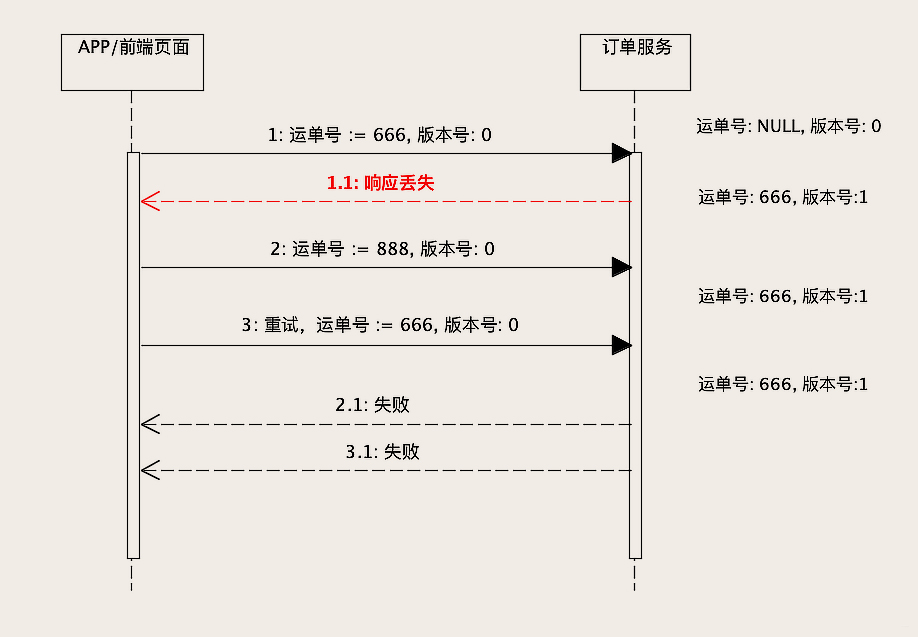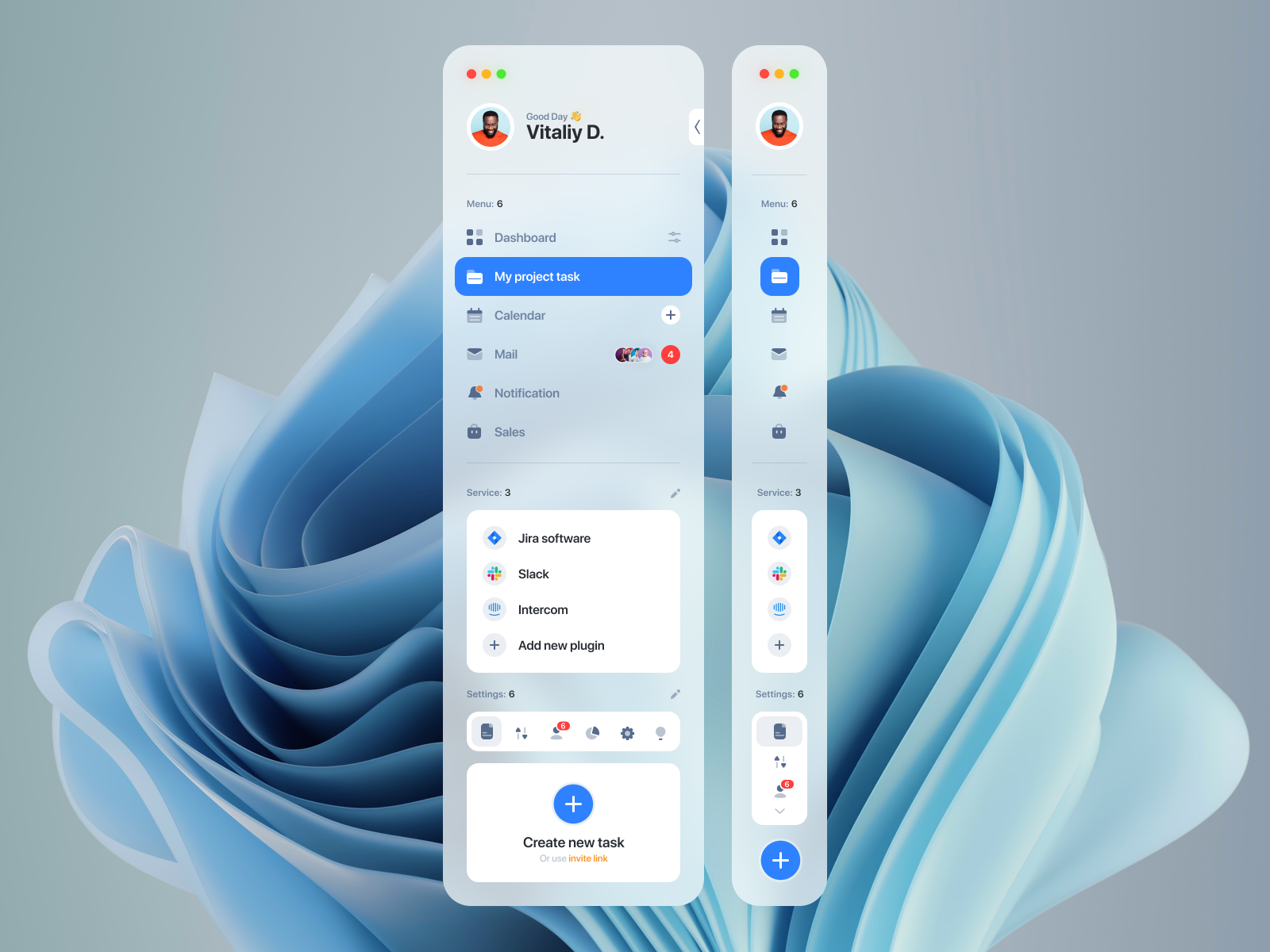1. 引言
1.1 微服务架构概述

微服务架构是一种将单个应用程序划分为一组小型服务的方法,每个服务运行在其独立的进程中,并通过轻量级机制(通常是HTTP资源API)进行通信。这些服务围绕业务能力构建,并且可以由全自动部署机制独立部署。微服务架构的关键特点包括:
-
- 服务自治:每个服务都是独立的,可以独立开发、部署和扩展。
-
- 去中心化治理:每个服务可以选择最适合其需求的工具和框架。
-
- 持续交付和部署:通过自动化流程,可以快速、频繁地部署新版本的服务。
1.2 Spring Boot与Spring Cloud简介
Spring Boot 是一个用于简化新Spring应用的初始搭建以及开发过程的框架。它通过提供默认配置和约定大于配置的理念,使得开发者可以快速启动和运行Spring应用。Spring Boot的核心特性包括:
-
- 自动配置:根据类路径中的依赖自动配置Spring应用。
-
- 起步依赖:通过引入“起步依赖”来简化依赖管理。
-
- 嵌入式服务器:内置Tomcat、Jetty或Undertow服务器,无需部署WAR文件。
Spring Cloud 是一系列框架的集合,用于构建分布式系统中的常见模式,如配置管理、服务发现、断路器、智能路由、微代理、控制总线等。Spring Cloud的核心组件包括:
-
- 服务注册与发现:使用Eureka或Consul进行服务注册和发现。
-
- 配置管理:使用Spring Cloud Config进行集中配置管理。
-
- 客户端负载均衡:使用Ribbon进行客户端负载均衡。
-
- 断路器:使用Hystrix进行服务容错和断路。
1.3 为什么选择Spring Boot和Spring Cloud
选择Spring Boot和Spring Cloud的原因包括:
-
- 简化开发:Spring Boot的自动配置和起步依赖大大简化了开发过程。
-
- 一致性:Spring Cloud提供了一套一致的工具和模式,用于解决微服务架构中的常见问题。
-
- 社区支持:Spring拥有庞大的社区和丰富的文档,可以提供强大的支持和资源。
-
- 集成生态:Spring Boot和Spring Cloud与Spring生态系统中的其他项目(如Spring Data、Spring Security)无缝集成。
代码示例
Spring Boot示例
import org.springframework.boot.SpringApplication;
import org.springframework.boot.autoconfigure.SpringBootApplication;
import org.springframework.web.bind.annotation.GetMapping;
import org.springframework.web.bind.annotation.RestController;
@SpringBootApplication
public class DemoApplication {
public static void main(String[] args) {
SpringApplication.run(DemoApplication.class, args);
}
}
@RestController
class HelloController {
@GetMapping("/hello")
public String hello() {
return "Hello, World!";
}
}
在这个示例中,我们创建了一个简单的Spring Boot应用,它包含一个REST控制器,当访问/hello端点时,返回"Hello, World!"。
Spring Cloud示例
假设我们有一个服务注册中心(Eureka Server)和一个简单的服务(Eureka Client):
Eureka Server
import org.springframework.boot.SpringApplication;
import org.springframework.boot.autoconfigure.SpringBootApplication;
import org.springframework.cloud.netflix.eureka.server.EnableEurekaServer;
@SpringBootApplication
@EnableEurekaServer
public class EurekaServerApplication {
public static void main(String[] args) {
SpringApplication.run(EurekaServerApplication.class, args);
}
}
Eureka Client
import org.springframework.boot.SpringApplication;
import org.springframework.boot.autoconfigure.SpringBootApplication;
import org.springframework.cloud.netflix.eureka.EnableEurekaClient;
import org.springframework.web.bind.annotation.GetMapping;
import org.springframework.web.bind.annotation.RestController;
@SpringBootApplication
@EnableEurekaClient
public class EurekaClientApplication {
public static void main(String[] args) {
SpringApplication.run(EurekaClientApplication.class, args);
}
}
@RestController
class HelloController {
@GetMapping("/hello")
public String hello() {
return "Hello from Eureka Client!";
}
}
在这个示例中,我们创建了一个Eureka服务注册中心和一个Eureka客户端服务。客户端服务注册到Eureka服务器,并提供一个简单的REST端点。
通过这些示例,我们可以看到Spring Boot和Spring Cloud如何简化微服务架构的开发和部署过程。
2. 微服务基础
2.1 单体应用与微服务的区别
单体应用是将所有功能打包在一个单元中,通常是一个单一的代码库,部署在一个单一的进程中。单体应用的优点包括开发简单、部署简单和易于测试。然而,随着应用规模的扩大,单体应用会变得越来越难以维护和扩展。
微服务则是将应用拆分成一组小型服务,每个服务运行在其独立的进程中,并通过轻量级机制(如HTTP)进行通信。微服务的优点在于每个服务可以独立开发、部署和扩展,从而提高了灵活性和可维护性。
2.2 微服务架构的优势与挑战
优势:
-
- 独立性:每个微服务可以独立开发、测试、部署和扩展。
-
- 技术多样性:可以使用不同的技术栈和数据库,以适应不同的服务需求。
-
- 可伸缩性:可以根据需求独立扩展服务的实例。
-
- 故障隔离:一个服务的故障不会直接影响到其他服务。
挑战:
-
- 复杂性:微服务架构引入了分布式系统的复杂性,如服务发现、负载均衡、数据一致性等。
-
- 运维难度:需要更复杂的监控、日志和配置管理。
-
- 数据一致性:跨服务的业务事务需要特殊处理。
-
- 网络延迟:服务间的通信可能引入额外的网络延迟。
2.3 微服务设计原则
-
- 单一职责原则(SRP):每个服务应该只负责一个单一的业务功能。
-
- 服务自治:每个服务应该是独立的,可以独立开发、部署和运行。
-
- 去中心化治理:每个服务可以选择最适合其需求的工具和框架。
-
- 可恢复性:服务应该设计为能够从故障中恢复,如使用断路器模式。
-
- 接口约束:服务间的接口应该简单且稳定,避免过度暴露内部实现细节。
代码示例
单体应用示例
public class MonolithicApplication {
public static void main(String[] args) {
// 启动应用
System.out.println("Monolithic Application started.");
}
public void processOrder(Order order) {
// 处理订单逻辑
System.out.println("Order processed: " + order);
}
public void processPayment(Payment payment) {
// 处理支付逻辑
System.out.println("Payment processed: " + payment);
}
public void sendNotification(Notification notification) {
// 发送通知逻辑
System.out.println("Notification sent: " + notification);
}
}
在这个单体应用示例中,所有的业务逻辑(订单处理、支付处理和通知发送)都集中在一个类中。
微服务示例
Order Service
import org.springframework.boot.SpringApplication;
import org.springframework.boot.autoconfigure.SpringBootApplication;
import org.springframework.web.bind.annotation.PostMapping;
import org.springframework.web.bind.annotation.RequestBody;
import org.springframework.web.bind.annotation.RestController;
@SpringBootApplication
public class OrderServiceApplication {
public static void main(String[] args) {
SpringApplication.run(OrderServiceApplication.class, args);
}
}
@RestController
class OrderController {
@PostMapping("/orders")
public String processOrder(@RequestBody Order order) {
// 处理订单逻辑
return "Order processed: " + order;
}
}
Payment Service
import org.springframework.boot.SpringApplication;
import org.springframework.boot.autoconfigure.SpringBootApplication;
import org.springframework.web.bind.annotation.PostMapping;
import org.springframework.web.bind.annotation.RequestBody;
import org.springframework.web.bind.annotation.RestController;
@SpringBootApplication
public class PaymentServiceApplication {
public static void main(String[] args) {
SpringApplication.run(PaymentServiceApplication.class, args);
}
}
@RestController
class PaymentController {
@PostMapping("/payments")
public String processPayment(@RequestBody Payment payment) {
// 处理支付逻辑
return "Payment processed: " + payment;
}
}
Notification Service
i
mport org.springframework.boot.SpringApplication;
import org.springframework.boot.autoconfigure.SpringBootApplication;
import org.springframework.web.bind.annotation.PostMapping;
import org.springframework.web.bind.annotation.RequestBody;
import org.springframework.web.bind.annotation.RestController;
@SpringBootApplication
public class NotificationServiceApplication {
public static void main(String[] args) {
SpringApplication.run(NotificationServiceApplication.class, args);
}
}
@RestController
class NotificationController {
@PostMapping("/notifications")
public String sendNotification(@RequestBody Notification notification) {
// 发送通知逻辑
return "Notification sent: " + notification;
}
}
在这个微服务示例中,我们将单体应用拆分成了三个独立的微服务:订单服务、支付服务和通知服务。每个服务都有自己的代码库和部署流程,可以独立运行和扩展。
通过这些示例,我们可以看到微服务架构如何通过将应用拆分成小型、独立的服务来提高灵活性和可维护性。
3. Spring Boot入门

3.1 环境搭建
在开始使用Spring Boot之前,需要确保开发环境已经准备好。以下是基本的环境要求:
-
- Java开发工具包(JDK):Spring Boot 2.x版本需要JDK 8或更高版本。
-
- 集成开发环境(IDE):如IntelliJ IDEA、Eclipse或Spring Tool Suite(STS)。
-
- 构建工具:如Maven或Gradle。
3.2 创建第一个Spring Boot应用
可以使用Spring Initializr(https://start.spring.io/)来快速生成一个Spring Boot项目。选择所需的依赖项,如Web、JPA、H2等,然后下载生成的项目包。
示例代码:
im
port org.springframework.boot.SpringApplication;
import org.springframework.boot.autoconfigure.SpringBootApplication;
import org.springframework.web.bind.annotation.GetMapping;
import org.springframework.web.bind.annotation.RestController;
@SpringBootApplication
public class HelloWorldApplication {
public static void main(String[] args) {
SpringApplication.run(HelloWorldApplication.class, args);
}
}
@RestController
class HelloController {
@GetMapping("/hello")
public String hello() {
return "Hello, World!";
}
}
在这个示例中,我们创建了一个简单的Spring Boot应用,它包含一个REST控制器,当访问/hello端点时,返回"Hello, World!"。
3.3 核心配置与自动配置
Spring Boot的核心特性之一是自动配置。Spring Boot会根据类路径中的依赖自动配置Spring应用。例如,如果类路径中包含Spring MVC,Spring Boot会自动配置一个嵌入式Tomcat服务器。
核心配置文件:
-
- application.properties 或 application.yml:用于配置应用的属性,如服务器端口、数据库连接等。
示例配置:
server.port=8080
spring.datasource.url=jdbc:h2:mem:testdb
spring.datasource.driverClassName=org.h2.Driver
spring.datasource.username=sa
spring.datasource.password=password
3.4 常用注解与组件
Spring Boot提供了许多注解和组件来简化开发过程。以下是一些常用的注解和组件:
-
- @SpringBootApplication:用于标记主类,启用自动配置和组件扫描。
-
- @RestController:用于标记一个类为REST控制器,处理HTTP请求。
-
- @GetMapping、@PostMapping、@PutMapping、@DeleteMapping:用于标记处理HTTP GET、POST、PUT、DELETE请求的方法。
-
- @Autowired:用于自动装配Spring管理的Bean。
-
- @Component、@Service、@Repository:用于标记类为Spring组件,分别表示通用组件、服务层组件和数据访问层组件。
示例代码:
import org.springframework.beans.factory.annotation.Autowired;
import org.springframework.boot.SpringApplication;
import org.springframework.boot.autoconfigure.SpringBootApplication;
import org.springframework.stereotype.Service;
import org.springframework.web.bind.annotation.GetMapping;
import org.springframework.web.bind.annotation.RestController;
@SpringBootApplication
public class HelloWorldApplication {
public static void main(String[] args) {
SpringApplication.run(HelloWorldApplication.class, args);
}
}
@RestController
class HelloController {
@Autowired
private HelloService helloService;
@GetMapping("/hello")
public String hello() {
return helloService.sayHello();
}
}
@Service
class HelloService {
public String sayHello() {
return "Hello, World!";
}
}
在这个示例中,我们使用了@Autowired注解来自动装配HelloService,并在HelloController中调用其方法。
通过这些示例,我们可以看到Spring Boot如何通过自动配置、常用注解和组件来简化Java应用的开发过程。
4. Spring Cloud基础

4.1 Spring Cloud组件概览
Spring Cloud是一个用于构建分布式系统的工具集,它提供了许多组件来解决微服务架构中的常见问题,如服务发现、配置管理、断路器、智能路由、微代理、控制总线等。Spring Cloud构建在Spring Boot之上,利用其自动配置和依赖管理功能,使得开发者可以快速搭建和部署微服务应用。
4.2 服务注册与发现(Eureka)
服务注册与发现是微服务架构中的核心组件之一。Eureka是Netflix开源的服务注册与发现工具,Spring Cloud提供了对Eureka的集成。
示例代码:
Eureka Server:
import org.springframework.boot.SpringApplication;
import org.springframework.boot.autoconfigure.SpringBootApplication;
import org.springframework.cloud.netflix.eureka.server.EnableEurekaServer;
@SpringBootApplication
@EnableEurekaServer
public class EurekaServerApplication {
public static void main(String[] args) {
SpringApplication.run(EurekaServerApplication.class, args);
}
}
Eureka Client:
import org.springframework.boot.SpringApplication;
import org.springframework.boot.autoconfigure.SpringBootApplication;
import org.springframework.cloud.netflix.eureka.EnableEurekaClient;
@SpringBootApplication
@EnableEurekaClient
public class EurekaClientApplication {
public static void main(String[] args) {
SpringApplication.run(EurekaClientApplication.class, args);
}
}
在这个示例中,我们创建了一个Eureka服务器和一个Eureka客户端。Eureka服务器用于注册和发现服务,而Eureka客户端则向Eureka服务器注册自己,并可以从Eureka服务器发现其他服务。
4.3 客户端负载均衡(Ribbon)
Ribbon是Netflix开源的客户端负载均衡器,Spring Cloud提供了对Ribbon的集成。Ribbon可以在客户端进行负载均衡,从而将请求分发到多个服务实例。
示例代码:
import org.springframework.beans.factory.annotation.Autowired;
import org.springframework.boot.SpringApplication;
import org.springframework.boot.autoconfigure.SpringBootApplication;
import org.springframework.cloud.client.loadbalancer.LoadBalanced;
import org.springframework.context.annotation.Bean;
import org.springframework.web.bind.annotation.GetMapping;
import org.springframework.web.bind.annotation.RestController;
import org.springframework.web.client.RestTemplate;
@SpringBootApplication
public class RibbonClientApplication {
public static void main(String[] args) {
SpringApplication.run(RibbonClientApplication.class, args);
}
@Bean
@LoadBalanced
public RestTemplate restTemplate() {
return new RestTemplate();
}
}
@RestController
class RibbonController {
@Autowired
private RestTemplate restTemplate;
@GetMapping("/ribbon-test")
public String ribbonTest() {
return restTemplate.getForObject("http://service-name/hello", String.class);
}
}
在这个示例中,我们使用@LoadBalanced注解来标记RestTemplate,使其具备负载均衡的能力。通过RestTemplate调用服务时,Ribbon会自动进行负载均衡。
4.4 声明式REST客户端(Feign)
Feign是一个声明式的Web服务客户端,它使得编写Web服务客户端变得更简单。使用Feign,只需要创建一个接口并加上注解即可。
示例代码:
import org.springframework.cloud.openfeign.FeignClient;
import org.springframework.web.bind.annotation.GetMapping;
@FeignClient(name = "service-name")
public interface HelloClient {
@GetMapping("/hello")
String hello();
}
import org.springframework.beans.factory.annotation.Autowired;
import org.springframework.boot.SpringApplication;
import org.springframework.boot.autoconfigure.SpringBootApplication;
import org.springframework.cloud.openfeign.EnableFeignClients;
import org.springframework.web.bind.annotation.GetMapping;
import org.springframework.web.bind.annotation.RestController;
@SpringBootApplication
@EnableFeignClients
public class FeignClientApplication {
public static void main(String[] args) {
SpringApplication.run(FeignClientApplication.class, args);
}
}
@RestController
class FeignController {
@Autowired
private HelloClient helloClient;
@GetMapping("/feign-test")
public String feignTest() {
return helloClient.hello();
}
}
在这个示例中,我们定义了一个Feign客户端接口HelloClient,并使用@FeignClient注解来标记它。在控制器中,我们通过自动装配HelloClient来调用远程服务。
通过这些示例,我们可以看到Spring Cloud如何通过其丰富的组件来简化微服务架构的开发和部署。
5. 服务治理
5.1 服务容错(Hystrix)
在微服务架构中,服务之间的调用可能会因为网络问题、服务宕机等原因导致调用失败。Hystrix是Netflix开源的一个库,用于处理分布式系统的延迟和容错问题。Spring Cloud提供了对Hystrix的集成。
示例代码:
import com.netflix.hystrix.contrib.javanica.annotation.HystrixCommand;
import org.springframework.beans.factory.annotation.Autowired;
import org.springframework.boot.SpringApplication;
import org.springframework.boot.autoconfigure.SpringBootApplication;
import org.springframework.cloud.client.circuitbreaker.EnableCircuitBreaker;
import org.springframework.stereotype.Service;
import org.springframework.web.bind.annotation.GetMapping;
import org.springframework.web.bind.annotation.RestController;
import org.springframework.web.client.RestTemplate;
@SpringBootApplication
@EnableCircuitBreaker
public class HystrixApplication {
public static void main(String[] args) {
SpringApplication.run(HystrixApplication.class, args);
}
}
@Service
class HelloService {
@Autowired
private RestTemplate restTemplate;
@HystrixCommand(fallbackMethod = "fallbackHello")
public String hello() {
return restTemplate.getForObject("http://service-name/hello", String.class);
}
public String fallbackHello() {
return "Hello fallback";
}
}
@RestController
class HelloController {
@Autowired
private HelloService helloService;
@GetMapping("/hello")
public String hello() {
return helloService.hello();
}
}
在这个示例中,我们使用@HystrixCommand注解来标记hello方法,并指定了一个降级方法fallbackHello。当hello方法调用失败时,Hystrix会自动调用fallbackHello方法,返回一个默认的响应。
5.2 服务网关(Zuul)
服务网关是微服务架构中的一个重要组件,它用于统一对外提供服务的入口,并可以进行路由、过滤、负载均衡等操作。Zuul是Netflix开源的一个网关服务,Spring Cloud提供了对Zuul的集成。
示例代码:
import org.springframework.boot.SpringApplication;
import org.springframework.boot.autoconfigure.SpringBootApplication;
import org.springframework.cloud.netflix.zuul.EnableZuulProxy;
@SpringBootApplication
@EnableZuulProxy
public class ZuulGatewayApplication {
public static void main(String[] args) {
SpringApplication.run(ZuulGatewayApplication.class, args);
}
}
在这个示例中,我们创建了一个Zuul网关应用。Zuul会自动从Eureka服务器获取服务列表,并根据路由规则将请求转发到相应的服务。
5.3 配置管理(Spring Cloud Config)
在微服务架构中,服务的配置管理是一个复杂的问题。Spring Cloud Config提供了集中式的外部配置支持,可以在不同的环境中管理应用的配置。
示例代码:
Config Server:
import org.springframework.boot.SpringApplication;
import org.springframework.boot.autoconfigure.SpringBootApplication;
import org.springframework.cloud.config.server.EnableConfigServer;
@SpringBootApplication
@EnableConfigServer
public class ConfigServerApplication {
public static void main(String[] args) {
SpringApplication.run(ConfigServerApplication.class, args);
}
}
Config Client:
import org.springframework.beans.factory.annotation.Value;
import org.springframework.boot.SpringApplication;
import org.springframework.boot.autoconfigure.SpringBootApplication;
import org.springframework.web.bind.annotation.GetMapping;
import org.springframework.web.bind.annotation.RestController;
@SpringBootApplication
public class ConfigClientApplication {
public static void main(String[] args) {
SpringApplication.run(ConfigClientApplication.class, args);
}
}
@RestController
class ConfigController {
@Value("${config.property}")
private String configProperty;
@GetMapping("/config-property")
public String getConfigProperty() {
return configProperty;
}
}
在这个示例中,我们创建了一个Config Server和一个Config Client。Config Server用于管理配置文件,而Config Client可以从Config Server获取配置属性。通过这种方式,我们可以实现配置的集中管理和动态刷新。
通过这些示例,我们可以看到Spring Cloud如何通过其丰富的组件来简化微服务架构的开发和部署,包括服务容错、服务网关和配置管理等方面。
6. 数据管理
在微服务架构中,数据管理是一个复杂的问题,涉及到分布式事务、数据一致性、数据分片与复制等多个方面。Spring Cloud提供了一些工具和框架来帮助解决这些问题。
6.1 分布式事务
分布式事务是指跨越多个服务或数据库的事务。在微服务架构中,由于服务之间的隔离性,传统的单体应用中的事务管理机制不再适用。Spring Cloud提供了一些解决方案,如使用Saga模式、TCC(Try-Confirm-Cancel)模式等。
示例代码:
假设我们有两个服务:OrderService和PaymentService,我们需要在这两个服务之间实现一个分布式事务。
OrderService:
import org.springframework.beans.factory.annotation.Autowired;
import org.springframework.stereotype.Service;
import org.springframework.web.client.RestTemplate;
@Service
public class OrderService {
@Autowired
private RestTemplate restTemplate;
public void createOrder(Order order) {
// 创建订单
// ...
// 调用PaymentService进行支付
restTemplate.postForObject("http://payment-service/pay", order, Void.class);
}
}
PaymentService:
import org.springframework.stereotype.Service;
@Service
public class PaymentService {
public void pay(Order order) {
// 进行支付
// ...
}
}
在这个示例中,OrderService在创建订单后调用PaymentService进行支付。为了确保分布式事务的一致性,我们可以使用Saga模式或TCC模式来协调这两个服务的事务。
6.2 数据一致性
在微服务架构中,数据一致性是一个挑战,因为数据可能分布在不同的服务和数据库中。Spring Cloud提供了一些工具和模式来帮助实现数据一致性,如使用事件驱动架构、消息队列等。
示例代码:
假设我们有一个库存服务和一个订单服务,当订单服务创建订单时,需要更新库存服务的库存数量。
OrderService:
import org.springframework.beans.factory.annotation.Autowired;
import org.springframework.kafka.core.KafkaTemplate;
import org.springframework.stereotype.Service;
@Service
public class OrderService {
@Autowired
private KafkaTemplate<String, Order> kafkaTemplate;
public void createOrder(Order order) {
// 创建订单
// ...
// 发送订单创建事件到Kafka
kafkaTemplate.send("order-created", order);
}
}
InventoryService:
import org.springframework.kafka.annotation.KafkaListener;
import org.springframework.stereotype.Service;
@Service
public class InventoryService {
@KafkaListener(topics = "order-created")
public void onOrderCreated(Order order) {
// 更新库存
// ...
}
}
在这个示例中,OrderService在创建订单后发送一个事件到Kafka,InventoryService监听这个事件并更新库存。通过这种方式,我们可以实现数据的一致性。
6.3 数据分片与复制
在微服务架构中,数据分片和复制是常见的数据管理策略,用于提高系统的可伸缩性和可用性。Spring Cloud提供了一些工具和框架来帮助实现数据分片和复制,如使用Spring Data Redis、Spring Data MongoDB等。
示例代码:
假设我们有一个用户服务,需要将用户数据分片存储在多个数据库中。
UserService:
import org.springframework.beans.factory.annotation.Autowired;
import org.springframework.data.mongodb.core.MongoTemplate;
import org.springframework.stereotype.Service;
@Service
public class UserService {
@Autowired
private MongoTemplate mongoTemplate;
public void saveUser(User user) {
// 根据用户ID进行分片
String shardKey = user.getId().toString().substring(0, 1);
mongoTemplate.save(user, "user_" + shardKey);
}
}
在这个示例中,我们根据用户ID的前缀进行数据分片,将用户数据存储在不同的MongoDB集合中。通过这种方式,我们可以提高系统的可伸缩性和性能。
通过这些示例,我们可以看到Spring Cloud如何通过其丰富的组件和框架来简化微服务架构中的数据管理问题,包括分布式事务、数据一致性、数据分片与复制等方面。
7. 消息传递
在微服务架构中,消息传递是一个核心概念,用于服务之间的通信。Spring Cloud提供了多种工具和框架来支持消息传递,包括消息队列、事件驱动架构和异步通信模式。
7.1 消息队列(RabbitMQ/Kafka)
消息队列是微服务架构中常用的通信机制,用于解耦服务之间的直接调用。Spring Cloud提供了对RabbitMQ和Kafka等消息队列的支持。
示例代码:
假设我们有一个订单服务和一个通知服务,订单服务在创建订单后需要通知通知服务。
OrderService(使用Kafka):
import org.springframework.beans.factory.annotation.Autowired;
import org.springframework.kafka.core.KafkaTemplate;
import org.springframework.stereotype.Service;
@Service
public class OrderService {
@Autowired
private KafkaTemplate<String, Order> kafkaTemplate;
public void createOrder(Order order) {
// 创建订单
// ...
// 发送订单创建事件到Kafka
kafkaTemplate.send("order-created", order);
}
}
NotificationService(使用Kafka):
import org.springframework.kafka.annotation.KafkaListener;
import org.springframework.stereotype.Service;
@Service
public class NotificationService {
@KafkaListener(topics = "order-created")
public void onOrderCreated(Order order) {
// 发送通知
// ...
}
}
在这个示例中,OrderService在创建订单后发送一个事件到Kafka,NotificationService监听这个事件并发送通知。通过这种方式,我们可以实现服务之间的异步通信。
7.2 事件驱动架构
事件驱动架构是一种基于事件的通信模式,服务之间通过发布和订阅事件来进行通信。Spring Cloud提供了对事件驱动架构的支持,如使用Spring Cloud Stream。
示例代码:
假设我们有一个库存服务和一个订单服务,当订单服务创建订单时,需要更新库存服务的库存数量。
OrderService(使用Spring Cloud Stream):
import org.springframework.beans.factory.annotation.Autowired;
import org.springframework.cloud.stream.annotation.EnableBinding;
import org.springframework.cloud.stream.messaging.Source;
import org.springframework.messaging.support.MessageBuilder;
import org.springframework.stereotype.Service;
@Service
@EnableBinding(Source.class)
public class OrderService {
@Autowired
private Source source;
public void createOrder(Order order) {
// 创建订单
// ...
// 发送订单创建事件到Spring Cloud Stream
source.output().send(MessageBuilder.withPayload(order).build());
}
}
InventoryService(使用Spring Cloud Stream):
import org.springframework.cloud.stream.annotation.EnableBinding;
import org.springframework.cloud.stream.annotation.StreamListener;
import org.springframework.cloud.stream.messaging.Sink;
import org.springframework.stereotype.Service;
@Service
@EnableBinding(Sink.class)
public class InventoryService {
@StreamListener(Sink.INPUT)
public void onOrderCreated(Order order) {
// 更新库存
// ...
}
}
在这个示例中,OrderService在创建订单后发送一个事件到Spring Cloud Stream,InventoryService监听这个事件并更新库存。通过这种方式,我们可以实现事件驱动架构。
7.3 异步通信模式
异步通信模式是微服务架构中常用的通信方式,可以提高系统的可伸缩性和性能。Spring Cloud提供了多种工具和框架来支持异步通信,如使用Spring WebFlux、Spring Cloud Gateway等。
示例代码:
假设我们有一个用户服务和一个订单服务,用户服务需要异步调用订单服务获取订单信息。
UserService(使用Spring WebFlux):
import org.springframework.beans.factory.annotation.Autowired;
import org.springframework.stereotype.Service;
import org.springframework.web.reactive.function.client.WebClient;
import reactor.core.publisher.Mono;
@Service
public class UserService {
@Autowired
private WebClient.Builder webClientBuilder;
public Mono<Order> getOrder(String orderId) {
return webClientBuilder.build()
.get()
.uri("http://order-service/orders/{orderId}", orderId)
.retrieve()
.bodyToMono(Order.class);
}
}
在这个示例中,UserService使用Spring WebFlux的WebClient进行异步调用,获取订单信息。通过这种方式,我们可以实现异步通信模式。
通过这些示例,我们可以看到Spring Cloud如何通过其丰富的组件和框架来简化微服务架构中的消息传递问题,包括消息队列、事件驱动架构和异步通信模式等方面。
8. 安全性
在微服务架构中,安全性是一个至关重要的方面。Spring Cloud提供了多种工具和框架来支持安全性,包括认证与授权、OAuth2与JWT以及安全最佳实践。
8.1 认证与授权
认证与授权是微服务架构中安全性的基础。Spring Cloud提供了多种方式来实现认证与授权,如使用Spring Security。
示例代码:
假设我们有一个用户服务和一个订单服务,我们需要对用户进行认证和授权。
UserService(使用Spring Security):
import org.springframework.context.annotation.Bean;
import org.springframework.security.config.annotation.web.builders.HttpSecurity;
import org.springframework.security.config.annotation.web.configuration.EnableWebSecurity;
import org.springframework.security.config.annotation.web.configuration.WebSecurityConfigurerAdapter;
import org.springframework.security.core.userdetails.User;
import org.springframework.security.core.userdetails.UserDetails;
import org.springframework.security.core.userdetails.UserDetailsService;
import org.springframework.security.provisioning.InMemoryUserDetailsManager;
@EnableWebSecurity
public class SecurityConfig extends WebSecurityConfigurerAdapter {
@Override
protected void configure(HttpSecurity http) throws Exception {
http
.authorizeRequests()
.antMatchers("/public/**").permitAll()
.anyRequest().authenticated()
.and()
.formLogin()
.and()
.httpBasic();
}
@Bean
@Override
public UserDetailsService userDetailsService() {
UserDetails user = User.withDefaultPasswordEncoder()
.username("user")
.password("password")
.roles("USER")
.build();
return new InMemoryUserDetailsManager(user);
}
}
在这个示例中,我们使用Spring Security对用户进行认证和授权。通过配置HttpSecurity,我们可以定义哪些URL需要认证,哪些URL可以公开访问。
8.2 OAuth2与JWT
OAuth2是一种授权框架,用于授权第三方应用访问用户资源。JWT(JSON Web Token)是一种紧凑且自包含的方式,用于在各方之间安全地传输信息。Spring Cloud提供了对OAuth2和JWT的支持。
示例代码:
假设我们有一个授权服务器和一个资源服务器,我们需要使用OAuth2和JWT进行认证和授权。
AuthorizationServer(使用Spring Security OAuth2):
import org.springframework.beans.factory.annotation.Autowired;
import org.springframework.context.annotation.Configuration;
import org.springframework.security.authentication.AuthenticationManager;
import org.springframework.security.oauth2.config.annotation.configurers.ClientDetailsServiceConfigurer;
import org.springframework.security.oauth2.config.annotation.web.configuration.AuthorizationServerConfigurerAdapter;
import org.springframework.security.oauth2.config.annotation.web.configuration.EnableAuthorizationServer;
import org.springframework.security.oauth2.config.annotation.web.configurers.AuthorizationServerEndpointsConfigurer;
import org.springframework.security.oauth2.config.annotation.web.configurers.AuthorizationServerSecurityConfigurer;
@Configuration
@EnableAuthorizationServer
public class AuthorizationServerConfig extends AuthorizationServerConfigurerAdapter {
@Autowired
private AuthenticationManager authenticationManager;
@Override
public void configure(ClientDetailsServiceConfigurer clients) throws Exception {
clients.inMemory()
.withClient("client")
.secret("{noop}secret")
.authorizedGrantTypes("authorization_code", "refresh_token", "password")
.scopes("read", "write")
.redirectUris("http://localhost:8080/callback");
}
@Override
public void configure(AuthorizationServerEndpointsConfigurer endpoints) throws Exception {
endpoints.authenticationManager(authenticationManager);
}
@Override
public void configure(AuthorizationServerSecurityConfigurer security) throws Exception {
security.tokenKeyAccess("permitAll()")
.checkTokenAccess("isAuthenticated()");
}
}
ResourceServer(使用Spring Security OAuth2):
import org.springframework.context.annotation.Configuration;
import org.springframework.security.config.annotation.web.builders.HttpSecurity;
import org.springframework.security.oauth2.config.annotation.web.configuration.EnableResourceServer;
import org.springframework.security.oauth2.config.annotation.web.configuration.ResourceServerConfigurerAdapter;
@Configuration
@EnableResourceServer
public class ResourceServerConfig extends ResourceServerConfigurerAdapter {
@Override
public void configure(HttpSecurity http) throws Exception {
http
.authorizeRequests()
.antMatchers("/public/**").permitAll()
.anyRequest().authenticated();
}
}
在这个示例中,我们使用Spring Security OAuth2配置了一个授权服务器和一个资源服务器。授权服务器负责生成和验证JWT,资源服务器负责保护资源。
8.3 安全最佳实践
在微服务架构中,有一些安全最佳实践可以帮助我们提高系统的安全性。
- 使用HTTPS:确保所有通信都通过HTTPS进行,以防止中间人攻击。
- 最小权限原则:为每个服务分配最小必要的权限,以减少潜在的安全风险。
- 定期更新和打补丁:定期更新系统和依赖库,以修复已知的安全漏洞。
- 监控和日志:实施监控和日志记录,以便及时发现和响应安全事件。
- 安全测试:定期进行安全测试,如渗透测试和代码审计,以发现潜在的安全问题。
通过这些示例和最佳实践,我们可以看到Spring Cloud如何通过其丰富的组件和框架来简化微服务架构中的安全性问题,包括认证与授权、OAuth2与JWT以及安全最佳实践等方面。
9. 监控与日志
在微服务架构中,监控与日志是确保系统稳定运行和快速定位问题的关键。Spring Cloud提供了多种工具和框架来支持监控与日志,包括日志聚合、应用性能监控和健康检查与度量。
9.1 日志聚合(ELK Stack)
日志聚合是将分布在不同服务中的日志集中存储和管理的过程。ELK Stack(Elasticsearch, Logstash, Kibana)是常用的日志聚合解决方案。
示例代码:
假设我们有一个订单服务,我们需要将订单服务的日志发送到ELK Stack进行聚合和分析。
OrderService(使用Logstash):
import org.springframework.context.annotation.Bean;
import org.springframework.context.annotation.Configuration;
import org.springframework.web.filter.CommonsRequestLoggingFilter;
@Configuration
public class LogConfig {
@Bean
public CommonsRequestLoggingFilter requestLoggingFilter() {
CommonsRequestLoggingFilter loggingFilter = new CommonsRequestLoggingFilter();
loggingFilter.setIncludeClientInfo(true);
loggingFilter.setIncludeQueryString(true);
loggingFilter.setIncludePayload(true);
loggingFilter.setMaxPayloadLength(10000);
return loggingFilter;
}
}
在这个示例中,我们使用Spring Boot的CommonsRequestLoggingFilter来记录请求日志。这些日志可以通过Logstash发送到Elasticsearch进行存储和分析。
Logstash配置:
input {
tcp {
port => 5000
codec => json
}
}
output {
elasticsearch {
hosts => ["localhost:9200"]
index => "order-service-%{+YYYY.MM.dd}"
}
}
在这个配置中,Logstash监听5000端口,接收来自订单服务的日志,并将这些日志发送到Elasticsearch。
Kibana配置:
通过Kibana,我们可以创建仪表板来可视化订单服务的日志数据,从而进行监控和分析。
9.2 应用性能监控(APM)
应用性能监控(APM)是监控应用程序性能和健康状况的过程。Spring Cloud提供了多种APM工具,如Spring Boot Actuator和Micrometer。
示例代码:
假设我们有一个订单服务,我们需要监控订单服务的性能指标。
OrderService(使用Spring Boot Actuator和Micrometer):
import org.springframework.boot.actuate.autoconfigure.metrics.MeterRegistryCustomizer;
import org.springframework.context.annotation.Bean;
import org.springframework.context.annotation.Configuration;
import io.micrometer.core.instrument.MeterRegistry;
@Configuration
public class MetricsConfig {
@Bean
public MeterRegistryCustomizer<MeterRegistry> metricsCommonTags() {
return registry -> registry.config().commonTags("application", "order-service");
}
}
在这个示例中,我们使用Spring Boot Actuator和Micrometer来收集订单服务的性能指标。通过配置MeterRegistryCustomizer,我们可以为指标添加公共标签。
Prometheus配置:
我们可以使用Prometheus来抓取这些指标,并通过Grafana进行可视化。
scrape_configs:
- job_name: 'order-service'
metrics_path: '/actuator/prometheus'
static_configs:
- targets: ['localhost:8080']
在这个配置中,Prometheus抓取订单服务的性能指标,并通过Grafana进行可视化。
9.3 健康检查与度量
健康检查是检查服务健康状况的过程,度量是收集服务性能指标的过程。Spring Boot Actuator提供了健康检查和度量的功能。
示例代码:
假设我们有一个订单服务,我们需要进行健康检查和收集度量指标。
OrderService(使用Spring Boot Actuator):
import org.springframework.boot.actuate.health.Health;
import org.springframework.boot.actuate.health.HealthIndicator;
import org.springframework.stereotype.Component;
@Component
public class OrderServiceHealthIndicator implements HealthIndicator {
@Override
public Health health() {
// 检查订单服务的健康状况
// ...
return Health.up().build();
}
}
在这个示例中,我们使用Spring Boot Actuator的HealthIndicator来实现健康检查。通过访问/actuator/health端点,我们可以获取订单服务的健康状况。
度量指标:
通过访问/actuator/metrics端点,我们可以获取订单服务的性能指标,如请求次数、响应时间等。
通过这些示例和配置,我们可以看到Spring Cloud如何通过其丰富的组件和框架来简化微服务架构中的监控与日志问题,包括日志聚合、应用性能监控和健康检查与度量等方面。
10. 部署与运维
在微服务架构中,部署与运维是确保系统稳定运行和快速迭代的关键。Spring Cloud提供了多种工具和框架来支持部署与运维,包括容器化部署、持续集成与持续部署和服务编排。
10.1 容器化部署(Docker)
容器化部署是将应用程序及其依赖打包成容器镜像,并在容器环境中运行的过程。Docker是常用的容器化技术。
示例代码:
假设我们有一个订单服务,我们需要将订单服务打包成Docker镜像并进行部署。
Dockerfile:
FROM openjdk:11-jre-slim
VOLUME /tmp
ARG JAR_FILE=target/*.jar
COPY ${JAR_FILE} app.jar
ENTRYPOINT ["java","-jar","/app.jar"]
在这个示例中,我们使用Dockerfile来定义订单服务的Docker镜像。通过COPY命令将构建好的JAR文件复制到镜像中,并通过ENTRYPOINT命令指定启动命令。
构建和运行Docker镜像:
docker build -t order-service:latest .
docker run -p 8080:8080 order-service:latest
通过这些命令,我们可以构建订单服务的Docker镜像并运行容器。
10.2 持续集成与持续部署(CI/CD)
持续集成(CI)是自动构建和测试代码的过程,持续部署(CD)是自动将代码部署到生产环境的过程。CI/CD可以提高开发效率和代码质量。
示例代码:
假设我们有一个订单服务,我们需要配置CI/CD管道来实现自动构建和部署。
Jenkinsfile:
pipeline {
agent any
stages {
stage('Build') {
steps {
sh 'mvn clean package'
}
}
stage('Test') {
steps {
sh 'mvn test'
}
}
stage('Deploy') {
steps {
sh 'docker build -t order-service:latest .'
sh 'docker push order-service:latest'
sh 'kubectl apply -f kubernetes/deployment.yaml'
}
}
}
}
在这个示例中,我们使用Jenkinsfile来定义CI/CD管道。通过定义不同的阶段(Build、Test、Deploy),我们可以实现自动构建、测试和部署订单服务。
10.3 服务编排(Kubernetes)
服务编排是管理和调度容器化服务的过程。Kubernetes是常用的服务编排平台。
示例代码:
假设我们有一个订单服务,我们需要在Kubernetes中部署和管理订单服务。
deployment.yaml:
apiVersion: apps/v1
kind: Deployment
metadata:
name: order-service
spec:
replicas: 3
selector:
matchLabels:
app: order-service
template:
metadata:
labels:
app: order-service
spec:
containers:
- name: order-service
image: order-service:latest
ports:
- containerPort: 8080
在这个示例中,我们使用deployment.yaml来定义订单服务的Kubernetes部署。通过指定副本数、选择器和容器配置,我们可以实现订单服务的高可用和负载均衡。
service.yaml:
apiVersion: v1
kind: Service
metadata:
name: order-service
spec:
selector:
app: order-service
ports:
- protocol: TCP
port: 80
targetPort: 8080
type: LoadBalancer
在这个示例中,我们使用service.yaml来定义订单服务的Kubernetes服务。通过指定选择器、端口和类型,我们可以实现订单服务的网络访问和负载均衡。
通过这些示例和配置,我们可以看到Spring Cloud如何通过其丰富的组件和框架来简化微服务架构中的部署与运维问题,包括容器化部署、持续集成与持续部署和服务编排等方面。
11. 案例研究
在微服务架构设计中,通过实际项目案例分析、常见问题与解决方案以及性能优化与调优的实践,可以更好地理解和应用Spring Boot与Spring Cloud。
11.1 实际项目案例分析
实际项目案例分析可以帮助我们理解如何在真实环境中应用微服务架构。以下是一个简化的案例分析。
案例背景:
假设我们有一个电商系统,包含用户服务、商品服务、订单服务和支付服务。每个服务都是一个独立的Spring Boot应用,并通过Spring Cloud进行服务发现、配置管理和负载均衡。
代码示例:
用户服务:
@RestController
@RequestMapping("/users")
public class UserController {
@Autowired
private UserService userService;
@GetMapping("/{id}")
public User getUserById(@PathVariable Long id) {
return userService.getUserById(id);
}
}
商品服务:
@RestController
@RequestMapping("/products")
public class ProductController {
@Autowired
private ProductService productService;
@GetMapping("/{id}")
public Product getProductById(@PathVariable Long id) {
return productService.getProductById(id);
}
}
订单服务:
@RestController
@RequestMapping("/orders")
public class OrderController {
@Autowired
private OrderService orderService;
@PostMapping
public Order createOrder(@RequestBody OrderRequest request) {
return orderService.createOrder(request);
}
}
支付服务:
@RestController
@RequestMapping("/payments")
public class PaymentController {
@Autowired
private PaymentService paymentService;
@PostMapping
public Payment createPayment(@RequestBody PaymentRequest request) {
return paymentService.createPayment(request);
}
}
通过这些代码示例,我们可以看到每个服务如何通过RESTful API提供服务,并通过Spring Cloud进行服务间的通信和协调。
11.2 常见问题与解决方案
在微服务架构中,常见问题包括服务间通信问题、配置管理问题、服务发现问题等。以下是一些常见问题及其解决方案。
服务间通信问题:
问题:服务间通信延迟高,影响系统性能。
解决方案:使用Spring Cloud Gateway进行请求路由和负载均衡,使用Feign进行声明式服务调用,减少网络延迟。
配置管理问题:
问题:配置文件分散在各个服务中,难以管理和维护。
解决方案:使用Spring Cloud Config统一管理配置文件,通过Git进行版本控制和集中管理。
服务发现问题:
问题:服务实例动态变化,难以进行服务发现和负载均衡。
解决方案:使用Spring Cloud Netflix Eureka进行服务注册和发现,实现动态服务发现和负载均衡。
11.3 性能优化与调优
性能优化与调优是确保微服务架构高效运行的关键。以下是一些性能优化和调优的实践。
代码优化:
- 异步处理:使用Spring的
@Async注解进行异步处理,提高系统吞吐量。 - 缓存优化:使用Spring Cache进行缓存管理,减少数据库访问。
- 连接池优化:使用HikariCP等高性能连接池,提高数据库连接效率。
监控与调优:
- 性能监控:使用Spring Boot Actuator和Micrometer进行性能监控,通过Prometheus和Grafana进行可视化。
- 日志优化:使用ELK Stack进行日志聚合和分析,通过Kibana进行日志可视化。
- JVM调优:通过调整JVM参数(如堆内存大小、垃圾回收策略)进行JVM调优,提高系统性能。
通过这些案例研究和实践,我们可以更好地理解和应用Spring Boot与Spring Cloud,实现高效、稳定的微服务架构。
12. 未来趋势与扩展
随着技术的不断发展,Java微服务架构也在不断演进。了解未来趋势和新兴技术对于保持系统的先进性和竞争力至关重要。以下是关于云原生应用、微服务架构的演进以及新兴技术与工具的讨论。
12.1 云原生应用
云原生应用是指专门为云环境设计和优化的应用程序。它们通常采用容器化、微服务架构、自动化管理和持续交付等实践。
示例代码:
假设我们有一个Spring Boot应用,我们希望将其部署为云原生应用。
Dockerfile:
FROM openjdk:11-jre-slim
VOLUME /tmp
ARG JAR_FILE=target/*.jar
COPY ${JAR_FILE} app.jar
ENTRYPOINT ["java","-jar","/app.jar"]
Kubernetes配置:
apiVersion: apps/v1
kind: Deployment
metadata:
name: my-app
spec:
replicas: 3
selector:
matchLabels:
app: my-app
template:
metadata:
labels:
app: my-app
spec:
containers:
- name: my-app
image: my-app:latest
ports:
- containerPort: 8080
---
apiVersion: v1
kind: Service
metadata:
name: my-app
spec:
selector:
app: my-app
ports:
- protocol: TCP
port: 80
targetPort: 8080
type: LoadBalancer
通过这些配置,我们可以将Spring Boot应用容器化,并使用Kubernetes进行部署和管理,实现云原生应用的实践。
12.2 微服务架构的演进
微服务架构的演进包括从简单的服务拆分到更复杂的服务治理、服务网格等。
服务网格:
服务网格是一种用于处理服务间通信的基础设施层,它通过提供服务发现、负载均衡、故障恢复、度量和监控等功能,简化了微服务架构的复杂性。
示例代码:
假设我们使用Istio作为服务网格,以下是一个简单的Istio配置示例。
Istio Gateway:
apiVersion: networking.istio.io/v1alpha3
kind: Gateway
metadata:
name: my-gateway
spec:
selector:
istio: ingressgateway
servers:
- port:
number: 80
name: http
protocol: HTTP
hosts:
- "*"
Istio VirtualService:
apiVersion: networking.istio.io/v1alpha3
kind: VirtualService
metadata:
name: my-app
spec:
hosts:
- "*"
gateways:
- my-gateway
http:
- match:
- uri:
prefix: /api
route:
- destination:
host: my-app
port:
number: 8080
通过这些配置,我们可以使用Istio进行流量管理、安全性和可观察性,实现更复杂的服务治理。
12.3 新兴技术与工具
新兴技术与工具不断涌现,为微服务架构带来新的可能性。
Quarkus:
Quarkus是一个为GraalVM和OpenJDK HotSpot量身定制的Kubernetes原生Java框架,它提供了极快的启动时间和更低的内存消耗。
示例代码:
假设我们使用Quarkus开发一个简单的REST服务。
import javax.ws.rs.GET;
import javax.ws.rs.Path;
import javax.ws.rs.Produces;
import javax.ws.rs.core.MediaType;
@Path("/hello")
public class GreetingResource {
@GET
@Produces(MediaType.TEXT_PLAIN)
public String hello() {
return "Hello, World!";
}
}
通过这些代码,我们可以看到Quarkus如何简化Java应用的开发,并提供高性能的运行时环境。
Micronaut:
Micronaut是一个现代的、基于JVM的全栈框架,用于构建模块化、易于测试的微服务应用。
示例代码:
假设我们使用Micronaut开发一个简单的REST服务。
import io.micronaut.http.annotation.Controller;
import io.micronaut.http.annotation.Get;
@Controller("/hello")
public class HelloController {
@Get
public String index() {
return "Hello, World!";
}
}
通过这些代码,我们可以看到Micronaut如何提供简洁的API和强大的功能,帮助我们快速构建微服务应用。
通过这些讨论和示例代码,我们可以看到Java微服务架构的未来趋势和扩展方向,包括云原生应用、服务网格、新兴框架和工具等。这些技术和实践将帮助我们构建更高效、更灵活的微服务系统。
13. 总结与展望
在本文的最后部分,我们将对微服务架构进行总结,探讨Spring Boot与Spring Cloud的未来发展,并强调持续学习与社区资源的重要性。
13.1 微服务架构的总结
微服务架构是一种将应用程序构建为一组小型、独立服务的方法,每个服务都运行在自己的进程中,并通过轻量级机制进行通信。这种架构模式提供了许多优势,包括更好的可扩展性、灵活性和容错性。
代码示例:
假设我们有一个简单的微服务应用,包含用户服务和订单服务。
用户服务:
@RestController
@RequestMapping("/users")
public class UserController {
@Autowired
private UserService userService;
@GetMapping("/{id}")
public User getUserById(@PathVariable Long id) {
return userService.getUserById(id);
}
}
订单服务:
@RestController
@RequestMapping("/orders")
public class OrderController {
@Autowired
private OrderService orderService;
@PostMapping
public Order createOrder(@RequestBody OrderRequest request) {
return orderService.createOrder(request);
}
}
通过这些代码示例,我们可以看到微服务架构如何通过独立的、可扩展的服务来构建复杂的应用程序。
13.2 Spring Boot与Spring Cloud的未来
Spring Boot和Spring Cloud作为构建微服务架构的强大工具,将继续发展和演进。
Spring Boot的未来:
Spring Boot将继续简化Java应用的开发,提供更多的自动化配置和开箱即用的功能。未来的版本可能会引入更多的云原生特性,如更好的Kubernetes集成、更高效的资源利用等。
Spring Cloud的未来:
Spring Cloud将继续扩展其服务治理和分布式系统支持。未来的版本可能会更加注重服务网格(如Istio)的集成,提供更强大的配置管理、服务发现和负载均衡功能。
代码示例:
假设我们使用Spring Cloud Gateway进行API路由和负载均衡。
spring:
cloud:
gateway:
routes:
- id: user_service
uri: lb://user-service
predicates:
- Path=/users/**
- id: order_service
uri: lb://order-service
predicates:
- Path=/orders/**
通过这些配置,我们可以看到Spring Cloud如何通过Gateway实现动态路由和负载均衡,为微服务架构提供强大的支持。
13.3 持续学习与社区资源
在快速发展的技术领域,持续学习和利用社区资源是保持竞争力的关键。
学习资源:
- 官方文档:Spring Boot和Spring Cloud的官方文档是学习的首选资源,提供了详细的指南和示例。
- 在线课程:平台如Coursera、Udemy和Pluralsight提供了丰富的Java和微服务课程。
- 技术博客和文章:关注技术博客和文章,如Spring官方博客、InfoQ、Medium等,可以获取最新的技术动态和实践经验。
社区资源:
- Stack Overflow:作为开发者社区,Stack Overflow提供了大量的技术问题和答案,是解决实际问题的宝贵资源。
- GitHub:GitHub上有许多开源项目和示例代码,可以学习和贡献代码,与社区成员交流。
- Meetup和 conferences:参加本地或在线的技术Meetup和 conferences,与行业专家和同行交流,扩展视野。
通过这些资源,我们可以不断提升自己的技术能力,紧跟技术发展的步伐,为构建更优秀的微服务应用打下坚实的基础。
通过这些总结和展望,我们可以看到微服务架构的强大潜力,以及Spring Boot和Spring Cloud在未来的发展方向。同时,持续学习和利用社区资源将帮助我们保持技术领先,构建更高效、更灵活的微服务系统。



















